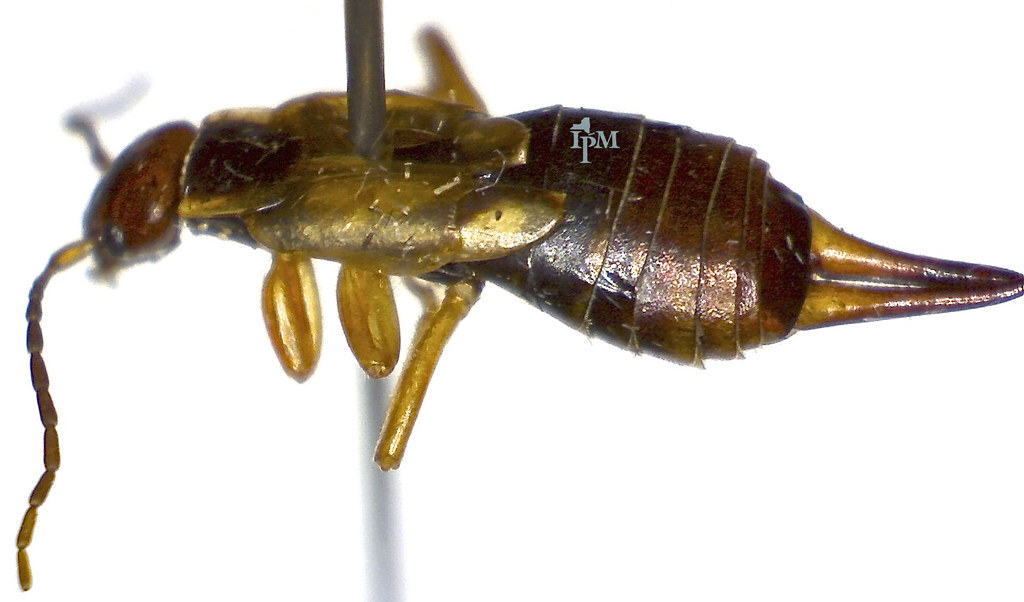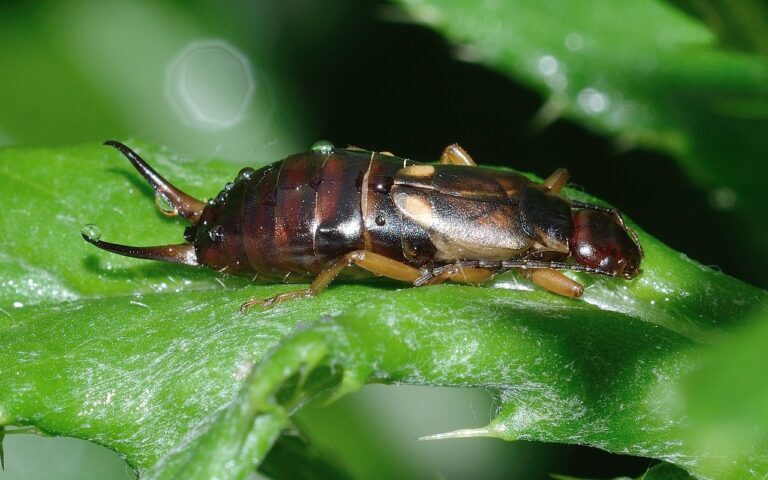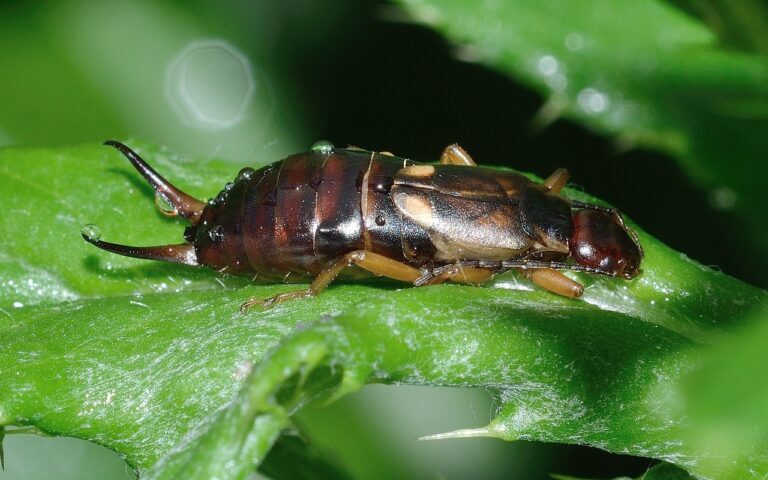All About Earwigs: Behavior, Habitats, and Life Cycle
Introduction
What are earwigs?
Earwigs are small insects that are known for their distinctive pincers at the end of their abdomen. They belong to the order Dermaptera and are commonly found in gardens, under rocks, and in damp areas. Despite their intimidating appearance, earwigs are generally harmless to humans and pets. They are nocturnal creatures, preferring to hide during the day and coming out at night to feed on decaying plant matter, insects, and small invertebrates. Earwigs also have a unique reproductive behavior called maternal care, where the female earwig protects and cares for her eggs and young nymphs. Overall, earwigs play an important role in the ecosystem by helping to break down organic matter and controlling populations of other insects.
Historical background
Earwigs have a long and fascinating historical background. These small insects have been around for millions of years and have evolved to adapt to various environments. In ancient times, earwigs were believed to be creatures of superstition and were associated with evil omens. However, in more recent history, scientists have discovered that earwigs play an important role in ecosystems by feeding on decaying organic matter and pests. Their unique pincer-like appendages, called cerci, have also been a subject of intrigue and study. Today, earwigs continue to be an intriguing insect species that captivates the curiosity of both scientists and nature enthusiasts alike.
Importance of studying earwigs
Earwigs may seem like small and insignificant creatures, but studying them is of great importance. By understanding their behavior, habitats, and life cycle, we can gain valuable insights into the ecological balance of our ecosystems. Earwigs play a crucial role in controlling populations of other insects, such as aphids and mites, which can be harmful to plants. Additionally, studying earwigs can provide valuable information for pest management strategies, helping us develop more effective and environmentally friendly methods to control pests. Therefore, delving into the world of earwigs is not only fascinating but also essential for maintaining the health and balance of our natural environment.
Physical Characteristics
Size and shape
Earwigs are small insects that vary in size and shape. On average, they measure between 5 to 25 millimeters in length. Their bodies are elongated and flattened, with a pair of pincers at the end of their abdomen. These pincers, also known as cerci, are used for defense and capturing prey. The size and shape of earwigs can also differ between species, with some having shorter and wider bodies while others are longer and narrower. Overall, earwigs exhibit a diverse range of sizes and shapes, making them an interesting group of insects to study.
Coloration
Earwigs are known for their unique coloration. Most earwigs are dark brown or black in color, which helps them blend in with their surroundings. This coloration provides them with camouflage, making it easier for them to hide from predators and prey. Some earwig species, however, exhibit bright colors, such as yellow or orange, which serve as warning signals to potential predators. The coloration of earwigs can vary depending on their habitat and the specific species. Overall, the diverse coloration of earwigs adds to their fascinating and complex nature.
Pincers
Earwigs are known for their unique pincers, which are located at the end of their abdomen. These pincers are used for a variety of purposes, including defense, capturing prey, and mating rituals. The size and shape of the pincers can vary between different species of earwigs. Some pincers are long and curved, while others are short and straight. Despite their intimidating appearance, earwig pincers are not harmful to humans and are primarily used for self-defense. When threatened, an earwig will raise its pincers in a defensive posture to ward off potential predators. Overall, the pincers of earwigs are fascinating adaptations that play an important role in their survival and behavior.
Behavior
Nocturnal activity
Earwigs are known for their nocturnal activity. They are primarily active during the night, seeking out food and mates under the cover of darkness. During the day, earwigs prefer to hide in dark, damp places such as under rocks, logs, or in crevices. Their preference for nocturnal activity is believed to be an adaptation to avoid predators and extreme temperatures. When night falls, earwigs emerge from their hiding spots and scavenge for food, which can include plant material, insects, and decaying organic matter. Their ability to navigate and forage in low light conditions is facilitated by their long, slender bodies and segmented antennae, which they use to sense their surroundings. Overall, the nocturnal activity of earwigs plays a crucial role in their survival and reproductive success.
Feeding habits
Earwigs are omnivorous insects that have a varied diet. They primarily feed on decaying plant matter, such as dead leaves and flowers, as well as other organic material. However, they are also known to be opportunistic predators, feeding on small insects, mites, and even other earwigs. Additionally, earwigs have been observed feeding on ripe fruits and vegetables, making them occasional pests in gardens and orchards. Overall, their feeding habits are adaptable and allow them to thrive in a wide range of habitats.
Social behavior
Earwigs are known for their interesting social behavior. While they are primarily nocturnal creatures, they often gather together during the day in dark and damp places. These gatherings, called aggregations, serve various purposes such as finding mates, protecting themselves from predators, and sharing resources. Within these aggregations, earwigs engage in social interactions, including grooming each other and communicating through touch and chemical signals. This social behavior is crucial for their survival and reproductive success. By working together, earwigs are able to navigate their complex habitats and overcome challenges in their environment.
Habitats
Natural habitats
Earwigs are commonly found in various natural habitats. They prefer moist environments such as gardens, flowerbeds, and under rocks or logs. These insects are known to thrive in areas with high humidity levels, as they require moisture for survival. Additionally, earwigs can be found in leaf litter, mulch, and decaying organic matter. They are also known to inhabit tree bark and crevices in wood. Overall, natural habitats provide the ideal conditions for earwigs to live and reproduce.
Urban environments
Earwigs are highly adaptable insects that can be found in a variety of environments, including urban areas. In urban environments, earwigs can often be found in gardens, flower beds, and even inside homes. They are attracted to the moisture and shelter provided by these environments. In addition, earwigs are known to feed on decaying organic matter, which can be abundant in urban settings. Despite their intimidating appearance, earwigs are generally harmless to humans and can actually be beneficial as they feed on other pests like aphids and mites. However, if their population becomes too large, they can become a nuisance. Therefore, it is important to take preventive measures to control their presence in urban environments.
Preferred hiding spots
Earwigs prefer dark and moist hiding spots where they can seek shelter and protection. Some common preferred hiding spots for earwigs include under rocks, logs, and debris, as well as in crevices and cracks in walls or wooden structures. They are also known to hide in garden beds, flower pots, and mulch. These hiding spots provide them with the ideal conditions for survival, as they can remain hidden during the day and come out at night to feed on decaying plant matter and other insects. By choosing these hiding spots, earwigs are able to avoid predators and maintain their moisture levels, which are crucial for their survival.
Life Cycle
Egg stage
During the egg stage, female earwigs lay their eggs in underground burrows or crevices. These eggs are small, oval-shaped, and typically white or cream-colored. The female earwig guards the eggs and ensures they remain protected until they hatch. The incubation period for earwig eggs can vary, but it usually takes around 7 to 10 days. Once the eggs hatch, tiny nymphs emerge, ready to begin their journey through the different stages of the earwig life cycle.
Nymph stage
The nymph stage is a crucial part of the earwig’s life cycle. During this stage, the earwig undergoes several molts, shedding its exoskeleton as it grows. Nymphs closely resemble adult earwigs but are smaller in size and lack fully developed wings. They are typically more active during the night and seek shelter during the day. Nymphs feed on a variety of organic matter, including plant material and small insects. As they continue to molt and grow, nymphs eventually reach adulthood and develop their characteristic pincers.
Adult stage
In the adult stage, earwigs undergo significant changes in their behavior and appearance. They develop wings, allowing them to fly short distances. However, most earwigs are not strong fliers and prefer to crawl or walk. Adult earwigs are nocturnal creatures, meaning they are most active during the night. They spend their days hiding in dark, damp places such as under rocks, logs, or in crevices. During the night, they emerge to feed on decaying plant material, small insects, and even other earwigs. Adult earwigs also engage in mating behavior during this stage, with males using their pincers to grasp females during courtship. Overall, the adult stage is a crucial period in the life cycle of earwigs, as it is when they reach sexual maturity and participate in essential reproductive activities.
Control and Prevention
Natural methods
Earwigs can be effectively controlled using natural methods. One common method is to create a barrier around your garden using diatomaceous earth, which is a natural substance that damages the exoskeleton of earwigs and other insects. Another natural method is to attract beneficial insects, such as ground beetles and parasitic wasps, which feed on earwigs. Additionally, you can use homemade traps, such as rolled-up newspapers or cardboard tubes filled with straw, to catch and remove earwigs from your garden. By utilizing these natural methods, you can effectively manage earwig populations without resorting to chemical pesticides.
Chemical control
Chemical control is a common method used to manage earwig populations. Various insecticides are available for this purpose, including pyrethroids and carbamates. These chemicals can be applied directly to earwig-infested areas or used as a barrier treatment around homes and gardens. It is important to follow the instructions on the product label and use the appropriate protective gear when applying insecticides. Chemical control can be an effective way to reduce earwig populations, but it should be used in conjunction with other integrated pest management strategies for long-term control.
Preventive measures
Preventive measures are essential to control and minimize the presence of earwigs in your surroundings. One effective method is to eliminate their preferred habitats, such as damp and dark areas. Keep your home clean and dry, repairing any leaks or water sources that may attract them. Additionally, sealing cracks and crevices in your house can prevent earwigs from entering. Another preventive measure is to remove debris and clutter from your garden, as they provide hiding places for earwigs. Regularly inspect and maintain your outdoor plants, ensuring they are healthy and free from pests. By implementing these preventive measures, you can reduce the likelihood of earwig infestations and maintain a pest-free environment.









